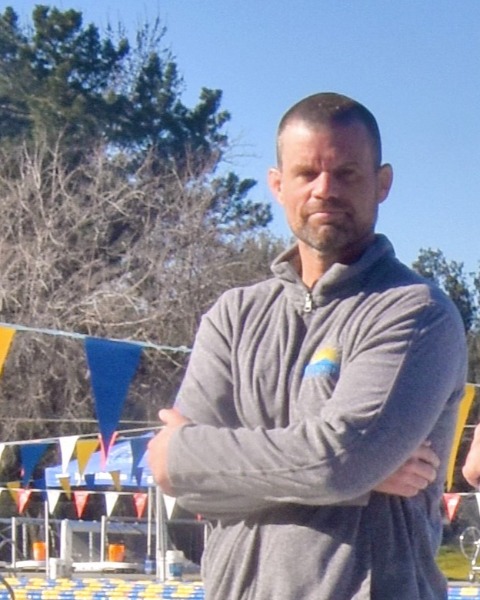Lifeguard Surveillance the Active Investigation Model
Thursday, March 20, 2025
11:00 AM - 12:15 PM PST
Room: Meeting Rooms 14-15
Earn 0.125 CEUs
Session Description: This course will delve into why traditional Lifeguard scanning and surveillance strategies often set Lifeguards up to fail at there most important function.
The Brain’s Pattern Recognition and Familiarity building strategy:
Pattern Recognition:
Building Patterns: How the brain uses past experiences to recognize familiar patterns and the limitations this creates (e.g., expecting a specific type of behavior based on previous experiences).
Visual Illusions: Explain phenomena like “seeing ghosts” or missing actual events due to the brain’s reliance on familiarity, patterns and dislike for the unexplained.
“Watching the Movie” play out: Primary Lifeguard Zone coverage Vs Secondary Lifeguard zone coverage.
Cognitive Load:
o Attention Span: Explain how repetitive and pattern building behaviors affects attention span and why lifeguards might miss critical signals when they fall into patterns.
o Confirmation Bias: Discuss how lifeguards focus on familiar scenarios, potentially missing atypical but critical signs of distress.
Discuss Dr. Frank Pia’s Research on Drowning:
o Defining active investigation vs waiting observations.
o 4 main behaviors every swimmer must exhibit vs an active drowning swimmer. If a swimmer is missing any of the 4 points, the Lifeguard is in the water investigating.
Frequent Rotations and new environments are a must for any successful scanning strategy
o The Average attention span for a young adult 10 – 20 Minutes.
o Major body adjustments every 5 minutes in a fixed Lifeguard Stand.
Discuss the finds of the research paper The Influence of Simulated Drowning Audits on Lifeguard Surveillance and Swimmer Risk-Taking at Public Pools.
o Limited research the shows the postive effects of “Audits” on improving scanning behavior.
Case Studies and Real-World Applications
o Incident Analysis: Present case studies where scanning techniques fell short and analyze what went wrong. Use these examples to illustrate the need for improved methods.
Application to Lifeguarding:
o Adapting Scanning Techniques: Discuss how incorporating insights from Dr. Pia’s work can lead to more effective scanning and recognition techniques.
o Training Adjustments: Suggest ways to adapt training programs to address these pitfalls and enhance lifeguards’ ability to detect drowning or distress signals.
The Brain’s Pattern Recognition and Familiarity building strategy:
Pattern Recognition:
Building Patterns: How the brain uses past experiences to recognize familiar patterns and the limitations this creates (e.g., expecting a specific type of behavior based on previous experiences).
Visual Illusions: Explain phenomena like “seeing ghosts” or missing actual events due to the brain’s reliance on familiarity, patterns and dislike for the unexplained.
“Watching the Movie” play out: Primary Lifeguard Zone coverage Vs Secondary Lifeguard zone coverage.
Cognitive Load:
o Attention Span: Explain how repetitive and pattern building behaviors affects attention span and why lifeguards might miss critical signals when they fall into patterns.
o Confirmation Bias: Discuss how lifeguards focus on familiar scenarios, potentially missing atypical but critical signs of distress.
Discuss Dr. Frank Pia’s Research on Drowning:
o Defining active investigation vs waiting observations.
o 4 main behaviors every swimmer must exhibit vs an active drowning swimmer. If a swimmer is missing any of the 4 points, the Lifeguard is in the water investigating.
Frequent Rotations and new environments are a must for any successful scanning strategy
o The Average attention span for a young adult 10 – 20 Minutes.
o Major body adjustments every 5 minutes in a fixed Lifeguard Stand.
Discuss the finds of the research paper The Influence of Simulated Drowning Audits on Lifeguard Surveillance and Swimmer Risk-Taking at Public Pools.
o Limited research the shows the postive effects of “Audits” on improving scanning behavior.
Case Studies and Real-World Applications
o Incident Analysis: Present case studies where scanning techniques fell short and analyze what went wrong. Use these examples to illustrate the need for improved methods.
Application to Lifeguarding:
o Adapting Scanning Techniques: Discuss how incorporating insights from Dr. Pia’s work can lead to more effective scanning and recognition techniques.
o Training Adjustments: Suggest ways to adapt training programs to address these pitfalls and enhance lifeguards’ ability to detect drowning or distress signals.
Learning Objectives:
- Upon completion participants will understand effective scanning strategies.
- Upon completion participants will identify common pitfalls current Lifeguard scanning strategies.
- Upon completion participants will understand the benefits of the investigation first model of Lifeguard scanning.

Matthew Galindo (he/him/his)
Program Manager
City of Concord
Concord, California
Devynn A. Darner (she/her/hers)
Program Coordinator
City of Concord
Concord, California

